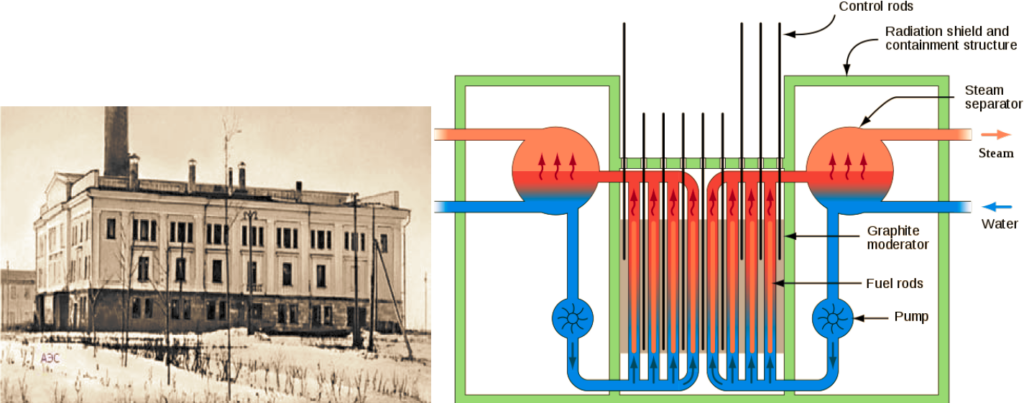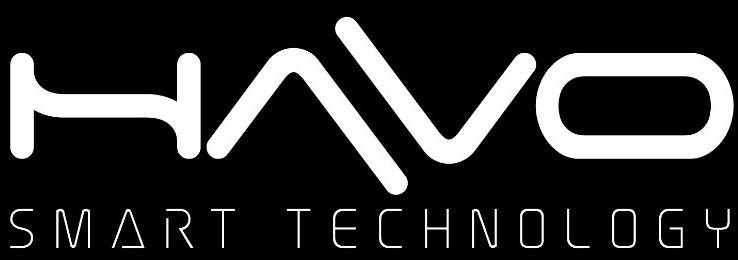1. History of Nuclear Technology Development
Towards the 1940’s, the first successful nuclear reactor was created in America. This was followed by the construction of other nuclear reactors. This development was fatal. One month after the first test of nuclear fission explosion, the tragedy of the explosion of the first atomic bomb on Hiroshima occurred, followed in Nagasaki three days later.

The Reactor Scheme of RBMK Type (Reaktory Bolshoi Moshchnosti Kanalynye) (right)
As a result, after the Second World War, there were various demands to transfer nuclear technology in a more positive direction, so that several countries began to use this technology for the benefit of society. Starting with the Soviet Union, which established the Obninsk Nuclear Power Plant with a capacity of 6 Megawatts, in Figure 2.
Then followed by America on July 17, 1955, with the construction of the BORAX (Boiling Water Reactor Experiment) III reactor, the origin of the further boiling water reactor, in the city of Arco, Idaho. BORAX III, in Figure 3, with a capacity of 2000 KW is used to supply electricity to the entire city of Arco in Idaho. This makes BORAX III become the first reactor in the world successfully supply electricity to the entire city.

After that, in 1956, the world’s first commercial nuclear power plant named Calder Hall in Windscale, England, in Figure 4, was also built. The nuclear power plant began operations in 1956 with an initial capacity of 50 MW per reactor, with a total of 200 MW from 4 reactors of the Magnox type. The Magnox reactor in Figure 5 itself is a CO2 gas cooled reactor with a graphite moderator. This reactor was designed by the United Kingdom. It is called Magnox because the cladding material is made by magnesium.
Since then, the development of nuclear technology in the world has increased very rapidly. The capacity of nuclear power plants in the world has increased drastically. From 1 Giga Watt in 1960, up to 100 Giga Watt in the late 1970s and over in the late 1980s with a capacity of 300 Giga Watt. Today, about 10% of the world’s electricity is generated from nuclear power, or about more than 2500 billion kWh every year. Apart from being used in the electricity sector, nuclear energy has also been used in various fields. Approximately 440 nuclear reactors with a total production capacity of approximately 377,000 Mega Watts are already operating in 30 countries. Meanwhile, more than 60 more reactors are under construction and 150 are in the planning stage.


2. The Development and Application of Nuclear Technology in Today’s World

Various nuclear reactions have been observed by scientists, generally it can be classified into only four types, namely, fission reactions, fusion reactions, radioactive decay, and nuclear transmutation. However, to produce nuclear energy, only the fusion and fission reactions in Figure 6 can be used. The fusion reaction can be utilized through controlled nuclear fusion, although it has not been successfully perfected. The fission reaction itself can be controlled using a device called a reactor. To this day, only fission reactions are in common use.
1) Power reactor, or what is commonly referred to as a nuclear power plant is a reactor used to generate electric power. In the power reactor, steam is used with high temperature and pressure produced by the fission reaction to turn the turbine. The turbine drives a generator which produces electricity. Meanwhile, the neutrons produced are partially absorbed by the control elements, and partially converted back into neutrons to carry out the sequence reaction.
At least, there are two types of power reactors (which are commonly used), namely:
- Thermal Reactor: This reactor uses a neutron moderator to slow down the neutrons so that further fission reactions can be generated. In Figure 7, the neutrons produced from fission reaction have high energy or in a fast condition, and must be lowered or slowed down by a moderator so it can be ensuring the continuity of the sequence reaction.

- Fast Reactor: In Figure 8, this reactor can maintain a continuous sequence reaction without the need for a neutron moderator. Because fast reactors use a different type of fuel than thermal reactors, the neutrons produced in the fast reactors do not need to be slowed down to ensure the fission reaction continues.

2) Research reactor, a nuclear reactor with main use is for research, training and education, and is not used to produce large amounts of electrical energy. Research reactor types are generally in the form of pool-type in Figure 9, tank-type, pool-in-tank type, and TRIGA (Training, Research, Isotopes, General Atomics). These reactors produce a variety of things (especially neutrons) that are useful in a variety of fields, including physics, chemistry, medicine, industry, forensics and so on, including materials testing and training. Research reactors are also used in producing radioisotopes. A radioisotope is an atom that has excess energy making it unstable.

Some functions of the radioisotopes are:
- The field of Health: Radioisotopes can be used for radiation therapy, such as therapy for thyroid disorders and therapy for polycythemia vera and leukemia. In addition, radioisotopes can also be used for the diagnosis of function and anatomy of organs, as well as the study of circulation and blood loss.
- The field of Agriculture: Radioisotopes can be used as tracer in research on the efficiency of plant fertilization. The radioisotope tracer technique will provide an appropriate and economical fertilization method.
- The field of Hydrology: Radioisotopes can be used to measure the velocity and discharge of river water, groundwater and seepage, leakage of dams and submerged pipelines, dumping locations, origin/pattern of sediment flow and deposition rate.
- The field of Industrial: Radioisotopes can be used in radiographic techniques. Radiographic technique is a technique that is often used, especially in the construction stages. In the petroleum industry sector, this technique is used in testing the quality of welds during the installation of oil/gas pipes and oil refinery installations. In addition to steel construction parts that are considered critical, this technique is also used in testing the weld quality of high-pressure steam boilers and in testing cracks in concrete construction.
- Written by: admin
- Posted on: 14/03/2022
- Tags: Nuclear Power Plant, Research Reactor, Technology Development


